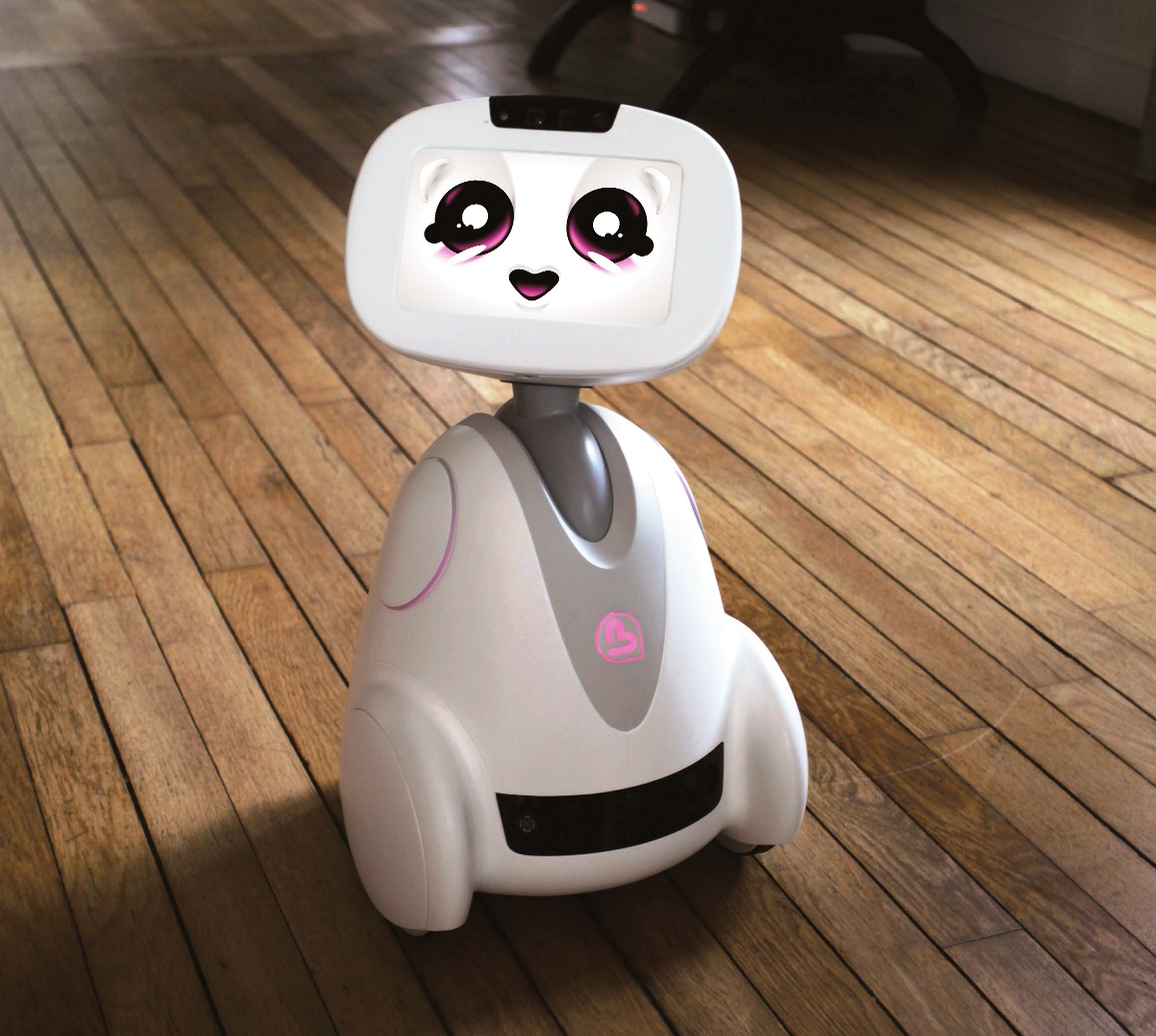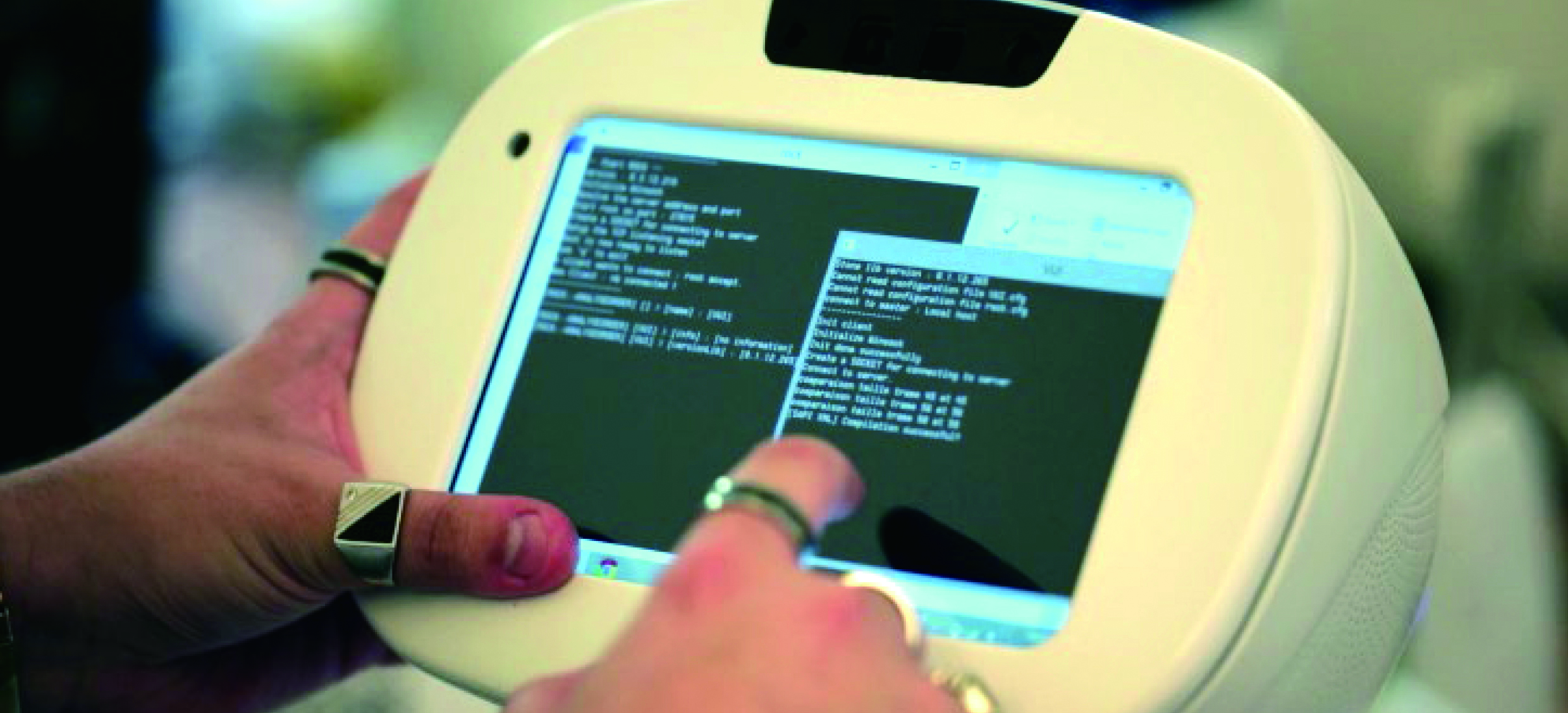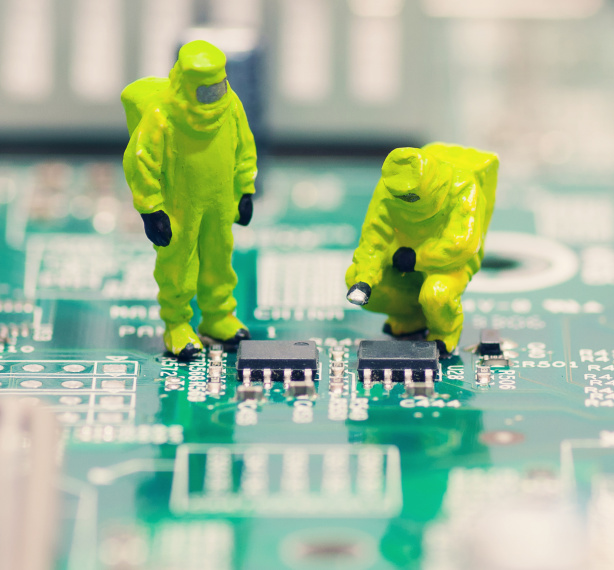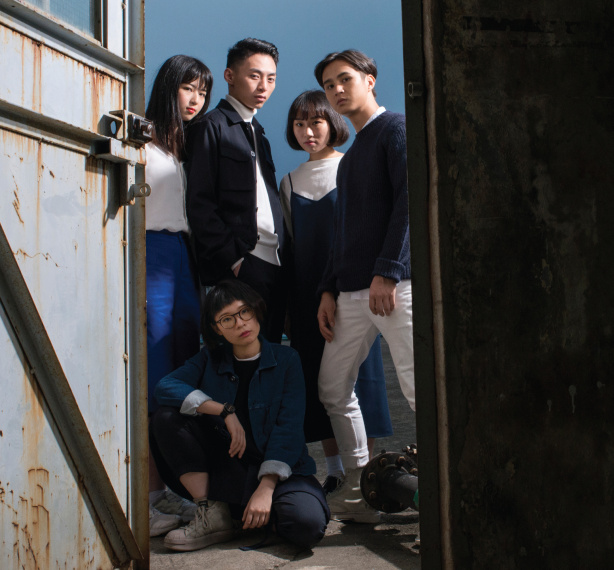Robot Society

Can the emerging field of social robotics deliver on its promise to revolutionise the way we use tech?
It’s not uncommon for us to find ourselves shouting at an inanimate, uncomprehending machine. A jammed printer or a Wi-Fi router that obstinately refuses to respond to our pleas. This proves that it is not so hard for the user to fool themselves into acting as though their poorly-performing machine is capable of participating in meaningful emotional exchanges. By extension it is not too difficult to design a machine with which the user can begin to empathise. Designers have always sought to exploit this phenomenon. Car manufacturers have long understood how to make a simple radiator grille look aggressive or friendly, compare the front end of a Ford Mustang to that of a Ford Ka. And Apple’s explosion from minority market share to tech behemoth was, in part, fuelled by a focus on design aesthetics beautiful enough to persuade the user into forgiving any machine’s technical shortcomings.
But the emerging trend of social robotics represents a fresh, scientific approach to tech design that encourages a feeling of personal identification between users and their machines. While Amazon’s Alexa, Apple’s Siri and Google’s Assistant aim to use advanced AI to converse and eventually build a relationship with the user, social robotics adopts a radically different approach. A key goal of social robotics is to improve the user experience by exploiting the physical and aesthetic design of robot assistants, generating the illusion of empathetic reactions from machines.

|
By optimising the way social robots look, how they move and the sounds they make, designers are setting out to produce machines that will become our everyday companions. These robots are designed to be accepted as fully-fledged, trusted members of the household. One such machine is BUDDY, developed by French outfit Blue Frog Robotics. BUDDY patrols the house when you’re away, dashing off to investigate suspicious noises and reporting back to you remotely. When you get home he cues up a playlist of your favourite songs, helps out in the kitchen with recipe tips or projects a movie onto the wall. All before ending the day by reading the kids a bedtime story. As Maud Verraes of Blue Frog tells us, “The functions of a domestic robot can be carried out on a smartphone or other IoT (Internet of Things) devices, but there’s an emotional aspect to BUDDY that [IoT and artificial intelligence] technology alone can’t offer.” One of the primary design goals of BUDDY was to make it cute. A social robot must be non-intimidating to be accepted as a member of the family. A primary application of these machines could be to care for the elderly or infirm. A robotic carer can provide round-the-clock monitoring that would normally be unaffordable to the vast majority of people. Such devices have the potential to keep housebound people connected to the outside world when they would otherwise be vulnerable to becoming isolated. But if a robot will be the constant companion of a housebound person, it is vital that the user has a positive emotional response to that machine. WALL-E’s Buster-Keatonesque ability to silently convey emotion was one of the BUDDY design team’s first points of reference. |
Looking at the array of social robots coming to market, a certain design aesthetic is beginning to emerge. LG’s Hub, Bosch’s Mykie (short for My Kitchen Elf) and the Kuri robot tend to have short curved bodies and oversized heads, lending each the air of an inquisitive infant. A theme that has emerged throughout the statements given by designers of these machines is the careful avoidance of producing a robot that is too anthropomorphic. The reasons for this are twofold. Firstly, the more human a robot appears, the more danger there is of it falling into the uncanny valley, generating precisely the wrong emotional response. For example, Kuri’s designers have opted to build a robot that, instead of providing verbal responses, communicates with a variety of R2D2-style beeps – enough to convey meaning but, it is hoped, not enough to start an argument. More importantly, the closer a robot comes to resembling a human, the more unrealistic the user’s expectations of its abilities become. On seeing a robot equipped with five-fingered, nimble-looking hands, a user might reasonably expect the machine to have a human level of dexterity and versatility, and they may find themselves disappointed. These robots are not all-purpose machines, they are not even particularly intelligent. They are designed to be part of an Internet of Things connected home working in synchrony with other connected devices to improve their owner’s user-experience. So, a social robot must be easy to anthropomorphise, but not too easy. These are domestic appliances not Blade Runner replicants.
|

|

|
Significant challenges remain to be overcome in the field of social robotics. While the physical design of a social robot can promote positive interactions with the user, there is only so far that a cute face can compensate for deficiencies in the machine’s underlying AI and UI. A prime example is one of the first social robots to be announced, the Boston-designed robot Jibo. Far in advance of Jibo’s actual abilities or applications being clarified, his design was shown off in a slick video demonstrating how the robot would move around and interact with the family at home. But after an immensely successful crowdfunding campaign Jibo’s launch has been repeatedly delayed leaving many of its initial investors wondering if the product will ever go into production. Reporting on in-home tests of the machine in a recent letter to investors, Jibo CEO Steve Chambers wrote that while “Testers reported enjoying the way Jibo looks, talks and interacts with people” making Jibo appear approachable is by far the easiest part of making the device pleasant to interact with. In order to perform social interactions with its owner, a machine such as Jibo has to be able to respond to the unpredictable turns of a natural conversation. Jibo’s innate likeability could not compensate for the “Many times users didn’t know what to say or do [in order to elicit a response from Jibo] and Jibo didn’t know how to help them break the cycle, creating confusion and frustration.” |
So, the future for social robotics is uncertain and the dream of owning a robot butler remains a long way off. Bosch’s Mykie device, while endowed with all the kawaii attributes of its social robot cousins, is really just a go-between that communicates with users and their smart appliances; fridges, stoves and washing machines connected to the nascent Internet of Things. LG’s Hub runs on top of Amazon’s Alexa digital assistant platform, arguably making it no more than an aesthetically pleasing skin grafted onto a more practically-useful technology.
On the other hand, through clever design social robotics promises to optimise the way that we interact with technology. In time social robots may become vital in mediating our relationship with the AI technology that will define the way we live, work and communicate. a relationship that we will explore further in forthcoming editions of SIGNED.
Others

Latest News | 1 September 2017
We need to talk about 'Tesign' - Design starting with Tech

Latest News | 1 September 2017
Game Changers

Latest News | 1 September 2017
Hyper-reality

Latest News | 1 September 2017
Battery Power

Latest News | 1 September 2017
When Art, Fashion and Music Collide

Latest News | 1 September 2017
Designers Making a Difference

Latest News | 1 September 2017
Small City, Big Data

Latest News | 1 September 2017
Making a Mark

Latest News | 1 September 2017
test
